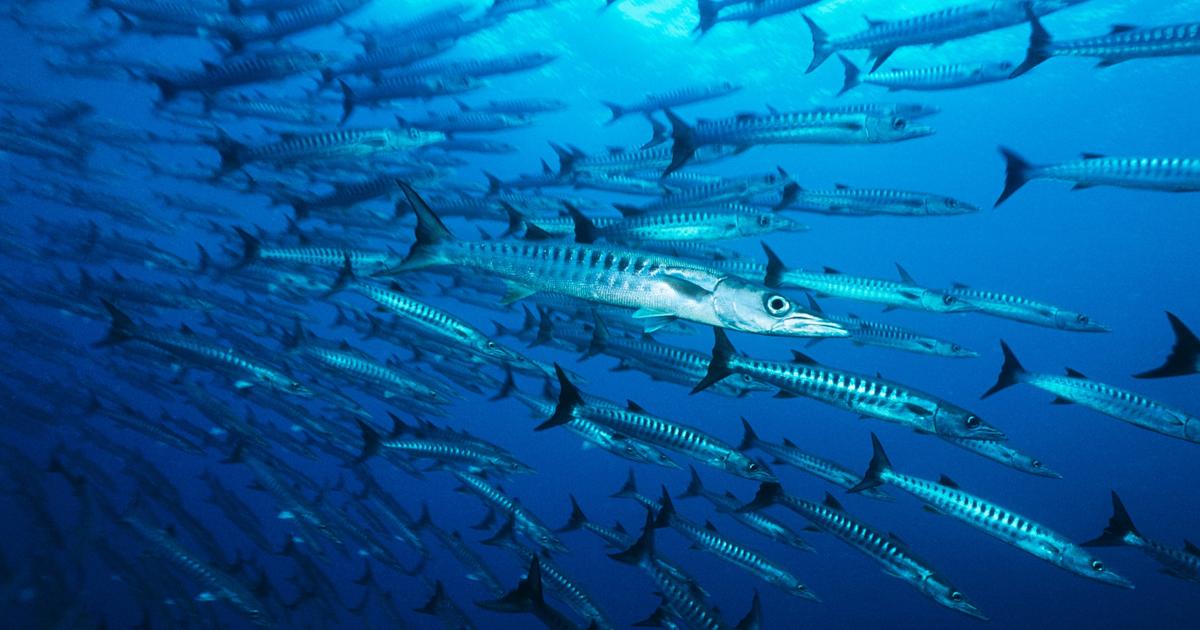Le Figaro Marseille
“There are more and more of them, and they are bigger and bigger
,” notes Gérard Giordano about the barracuda.
Like many fishermen and divers, Vice-President Paca of the National Federation of Boating and Sea Fishing (FNPP) assures us: this carnivorous fish is, slowly but surely, taking up residence in the waters of the Marseille creeks.
Park observers did not fail to communicate about the arrival of this new species in the depths of the site, amazed by the arrival of this aquatic vertebrate usually more fond of the waters of the southern Mediterranean.
“It’s a fish that gradually develops in the region and gradually takes its place thanks to its ability to adapt
,” confirms Vincent Garcia, instructor and fishing guide on the Blue Coast for around ten years.
“They come in large numbers, often in schools of dozens of individuals.
This astonishes fishermen and visitors
,” underlines Didier Réault, president of the Calanques National Park, to Le
Figaro
.
The arrival of the barracuda in the waters of Marseille's coves is not a new fact, however, the first specimens having been spotted in the area ten years ago.
And the phenomenon is accelerating due to climate change.
“We have been observing the barracuda arriving on our coasts for several years.
It is a species indicative of the warming of the waters of the Mediterranean Sea, the coasts of Marseille being located in a colder area than to the south
,” explains the Calanques National Park.
“These are fish that move with warm currents.
They are visible from May until October.
But it’s far from being an invasion
,” says Vincent Garcia.
A nuisance for the ecosystem of the creeks?
The barracuda is not the only new kid to show up in the adjacent areas of the Calanques Park.
Over the past two years, some divers claim to have observed dolphinfish.
This aquatic vertebrate, reputed to be
“ultra-fast”
, has gradually migrated from the Atlantic Ocean to the Mediterranean Sea, where it appreciates the warmth.
Even more impressive, mobula rays have been seen swimming just a few nautical miles from the coves.
A young specimen of this
“sea devil”
, which can weigh up to a ton as an adult, was even captured by a fisherman before being safely returned to the water.
“These species come closer to the park and are present in greater numbers in its adjacent areas accessible by small fishing boats
,” maintains Gérard Giordano.
Could this arrival of new specimens disrupt biodiversity and harm the balance of the surrounding ecosystem?
“Questions arise on this subject, but the arrival of new predators does not necessarily mean that all the fish will be eaten
,” explains the Calanques National Park, which specifies that scientific studies are currently being carried out to study the phenomenon and measure its effects on the balance of surrounding marine areas.
“The barracuda finds its place in an area where certain species have been reduced by overfishing.
It’s a natural cycle of replacement of the food chain, until a new disruption
,” continues Vincent Garcia.
“This will inevitably have effects on the local ecosystem.
“It’s a phenomenon to observe in order to continue to protect existing species
,” concludes Didier Réault.
Finally, do these fish, and especially the barracuda, represent a danger to humans?
The Calanques National Park assures you: the latter is harmless, unless you risk feeding it.
“A few attacks have been recorded in Guadeloupe, but mainly due to human-related disturbances.
As a reminder, you should never feed a wild animal
,” says the park.
“The sea bass, which could be a theoretical victim of the barracuda, is actually doing very well in our protected maritime areas.
This underlines the interest of the latter: to serve as refuge areas for threatened species
,” he concludes.

